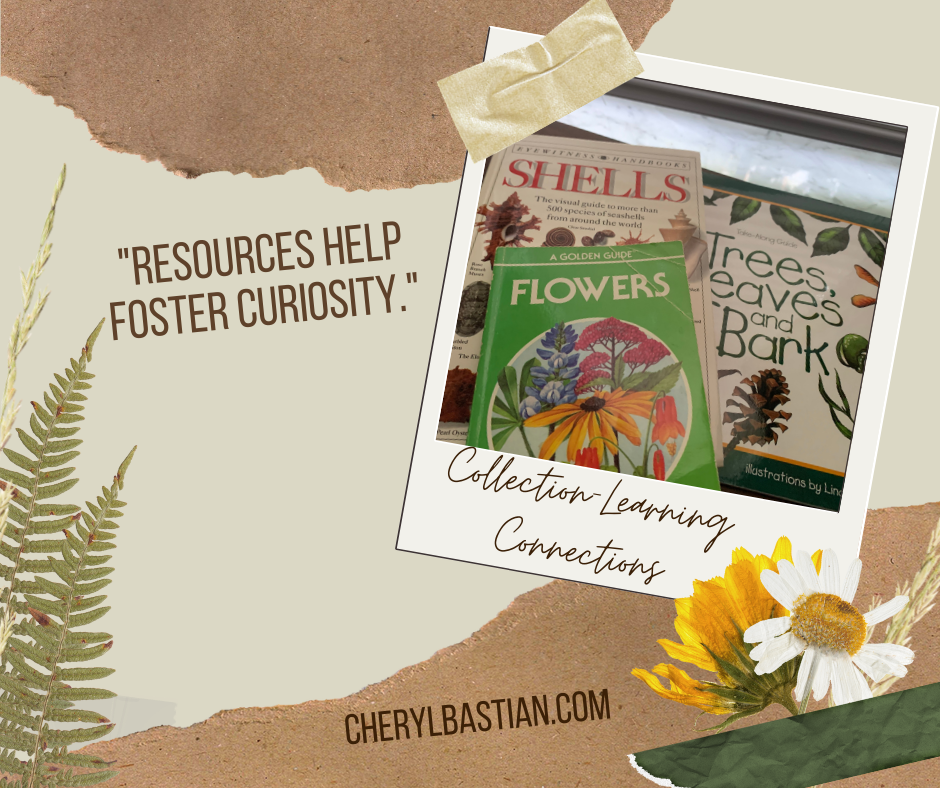This post provides over 60 resources you can use today!
But FIRST, here are some important starting points.
Starting Points for Successful Study
Find out what your children want to learn, what interests them. Start there.
If there are no hints, start with animals. Most children love animals, of some type.
Add real experiences. Many can be found around your home or community.
Provide a field guide or two for found treasures.
Gather a pile of inviting non-fiction and picture books.
Now for the resources
Nature-Related Picture Books
A Nest is Noisy, Dianna Hutts Aston
Miss Rumphius, Barbara Cooney
One Morning in Maine, Robert McCloskey
Owl Moon, Jane Yolen
Roxaboxen, Alice McLerran
Snowflake Bentley, Jacqueline Briggs Martin
The Raft, Jim LaMarche
Nature-Related Non-Fiction Books
Blooms and Plants
From Seed to Plant, Gail Gibbons
How a Seed Grows, Helene J. Jordan
Planting a Rainbow, Lois Ehlert
Stems and Roots, David M. Schwartz
The Carrot Seed, Ruth Krauss
The Tiny Seed, Eric Carle
Tops and Bottoms, Janet Stevens
Insects and Crawlies
About Arachnids: A Guide for Children, Cathyrn Sill
About Insects: A Guide for Children, Cathryn Sill
Ant Cities, Arthur Dorros
Are You A Grasshopper? Judy Allen
Bugs Are Insects, Anne Rockwell
The Ant and the Grasshopper, Amy Lowry Poole
The Honey Makers, Gail Gibbons
Tadpoles and Frogs
About Amphibians: A Guide for Children, Cathryn Sill
Frogs, Gail Gibbons
Frogs and Polliwogs, Dorothy Childs Hogner
From Tadpole to Frog, Wendy Pfeffer
Beaches
About Crustaceans: A Guide for Children, Cathryn Sill
A House for Hermit Crab, Eric Carle
Gulls, Gulls, Gulls, Gail Gibbons
Sea Shells, Crabs, and Sea Stars, Christiane Kump Tibbitts
What Lives in A Shell?, Kathleen Weidner Zoehfeld
Fins
About Fish: A Guide for Children, Cathryn Sill
Feathered Friends
All About Birds, Cathryn Sill
About Hummingbirds: A Guide for Children, Cathryn Sill
Counting is for the Birds, Frank Mazzola, Jr.
Furry Critters
All About Mammals, Cathryn Sill
Field Guides and Resources
A Handbook of Nature Study, Anna Botsford Comstock
Florida’s Fabulous Series
Florida’s Fabulous Waterbirds: Their Stories, Winston Williams
Florida’s Fabulous Land Birds: Their Stories, Winston Williams
Florida’s Fabulous Reptiles and Amphibians: Snakes, Lizards, Alligators, Frogs and Turtles, Winston Williams
Take-Along Guides
Caterpillars, Bugs, and Butterflies, Mel Boring
Birds, Nests, and Eggs, Mel Boring
Trees, Leaves, and Bark, Diane Burns
Peterson Field Guides http://www.houghtonmifflinbooks.com/peterson/
Peterson Field Guide to Reptiles and Amphibians of Eastern and Central North America, Fourth Edition, Powell, Conant, and Collins
Nature-Related Drawing Books for Sketchers and Creatives
Draw 50 Birds: The Step-by-Step Way to Draw Chickadees, Peacocks, Toucans, Mallards, and Many More of Our Feathered Friends, Lee J. Ames
Draw 50 Flowers, Trees, and Other Plants: The Step-by-Step Way to Draw Orchids, Weeping Willows, Prickly Pears, Pineapples, and Many More..., Lee J. Ames
How to Draw Flowers (Dover How to Draw), Barbara Soloff Levy
Supplies and Materials
Brock Magiscope https://www.cherylbastian.com/blog/2016/4/22/owl-pellets-and-a-magiscope-simple-discovery-science
Carolina Biological Supply Company https://www.carolina.com/ (owl pellets)
Educational Innovators https://www.teachersource.com/ (dolomite samples and owl pellets)
Nature Gift Store https://www.nature-gifts.com/ (ant farms and live ants, butterflies)
Celebrate Simple Blog Posts
Blog post: Vintage Science Books for the WIN!
Use what is available in the backyard, at the park or beach front, on the porch or pond’s edge—wherever you happen to be.
Porch Science https://www.cherylbastian.com/blog/2017/5/31/porch-science
Citizen Science https://www.cherylbastian.com/blog/2017/10/22/citizen-science-get-real-with-learning
Puddle Fun https://www.cherylbastian.com/blog/2016/10/4/children-learn-from-puddles
MORE…
We live in a suburban area. Though we have a backyard and a neighborhood to explore, we have to plan and be intentional about visiting state parks, ponds and streams, or the beach. When we travel we look for opportunities which are not typical or available in our area.
We’ve enjoyed
YOU can teach science!
And, in doing so, you will not only keep your child’s natural curiosity alive, but you will open doors for other discipline areas like math and writing.
Maybe you are thinking. “There could have a WHOLE podcast on nature-related study.” In fact, there is! Check out this conversation I had with Jenni and Jody over at From Cradle to Calling.
When in doubt, remember to remind yourself to look for what interests your child. Start there!
YOU can teach science!




















